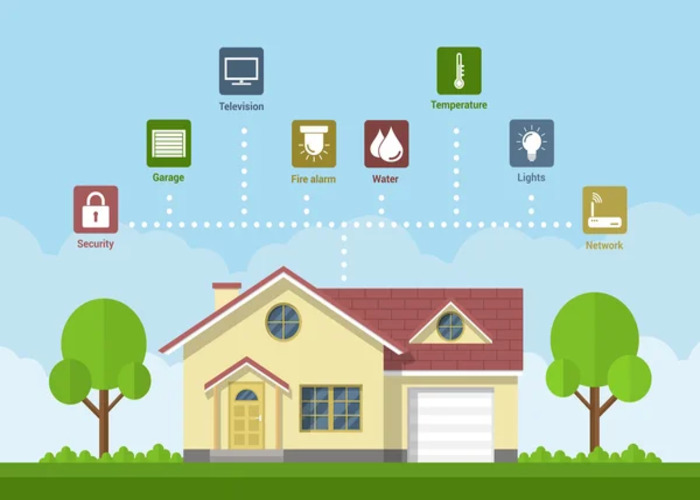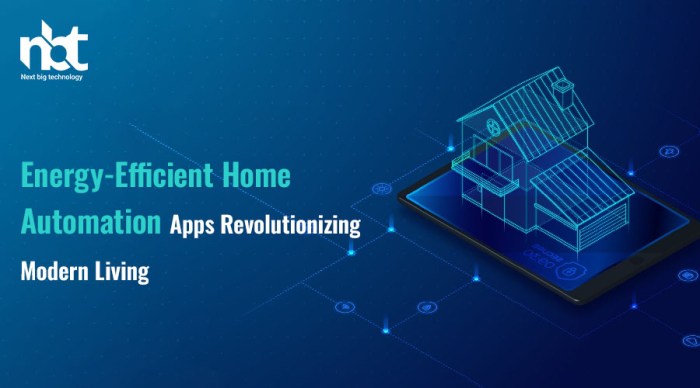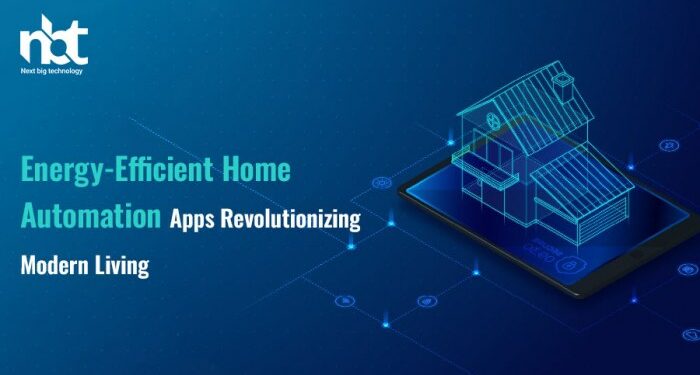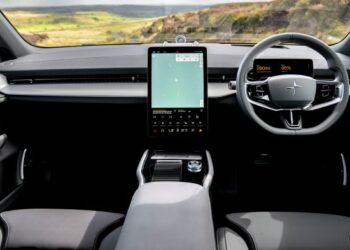Embark on a journey exploring the synergistic relationship between home automation and energy efficiency. Discover how these modern concepts intertwine to create a smarter, more sustainable way of living.
Delve deeper into the realm of energy optimization through innovative automation systems, promising a future of reduced consumption and environmental impact.
Introduction to Home Automation and Energy Efficiency
Home automation refers to the use of technology to control various devices and systems within a home, such as lighting, heating, ventilation, air conditioning, appliances, and security systems. On the other hand, energy efficiency focuses on reducing energy consumption without compromising comfort or convenience.
How Home Automation Systems Work to Optimize Energy Consumption
Home automation systems utilize sensors, timers, and programmable settings to monitor and adjust energy usage based on factors like occupancy, time of day, and external conditions. For example, smart thermostats can learn your schedule and preferences to automatically adjust the temperature for optimal energy efficiency.
The Importance of Combining Home Automation with Energy Efficiency
By combining home automation with energy efficiency, homeowners can create a smarter and more sustainable living environment. Not only does it help reduce energy bills and environmental impact, but it also enhances convenience and comfort by automating tasks that would otherwise be manual.
Advantages of Integrating Home Automation with Energy Efficiency

Home automation offers numerous benefits when it comes to enhancing energy efficiency in a household. By combining these two concepts, homeowners can enjoy cost savings, reduce their carbon footprint, and experience the convenience of managing energy consumption remotely.
Cost-saving Benefits
- Automated systems can optimize energy usage by adjusting settings based on occupancy, weather conditions, and time of day, leading to reduced energy bills.
- Smart thermostats, lighting controls, and energy monitoring devices help identify areas of energy waste and suggest improvements to increase efficiency.
Environmental Sustainability
- Reducing energy consumption through automation contributes to lower greenhouse gas emissions, mitigating the impact of climate change and promoting a cleaner environment.
- By utilizing energy-efficient appliances and integrating them with smart home technology, homeowners can actively participate in sustainable living practices.
Convenience Factor
- Remote access to energy management systems allows users to monitor and control their home's energy usage from anywhere, providing flexibility and convenience.
- Automation enables scheduling of energy-intensive tasks during off-peak hours, maximizing cost savings without compromising comfort or convenience.
Key Features and Technologies for Energy-Efficient Home Automation
Energy-efficient home automation relies on a range of smart devices and technologies to optimize energy consumption and create a more sustainable living environment.
Smart Thermostats
Smart thermostats are a key component of energy-efficient home automation systems. These devices allow homeowners to regulate their home's temperature remotely, adjusting heating and cooling settings based on occupancy patterns and preferences. By intelligently controlling the HVAC system, smart thermostats can help reduce energy waste and lower utility bills.
Lighting Controls
Lighting controls, such as smart light bulbs and dimmer switches, play a crucial role in energy-efficient home automation. These devices enable users to customize lighting levels, create schedules, and even integrate with motion sensors to ensure lights are only on when needed.
By efficiently managing lighting usage, homeowners can save energy and contribute to a more sustainable lifestyle.
Smart Appliances
Integrating smart appliances, such as energy-efficient refrigerators, washing machines, and dishwashers, into a home automation system can further enhance energy efficiency. These appliances are designed to optimize energy consumption by running at optimal times, adjusting settings based on usage patterns, and even communicating with other smart devices in the home.
By coordinating the operation of smart appliances with the overall home automation system, users can minimize energy waste and reduce their carbon footprint.
Impact on Energy Bills and Long-Term Savings
Combining home automation with energy efficiency can have a significant impact on reducing energy bills and achieving long-term savings for homeowners.
Lower Utility Bills with Automation
By utilizing smart energy solutions like automated thermostats, lighting controls, and smart appliances, homeowners can optimize their energy usage based on their specific needs. For example, a smart thermostat can adjust the temperature settings according to the occupants' schedule, resulting in lower heating and cooling costs.
Similarly, smart lighting systems can automatically turn off lights in unoccupied rooms, reducing electricity consumption. These small adjustments add up over time, leading to noticeable savings on monthly utility bills.
Potential Long-Term Savings
Investing in energy-efficient automation systems not only lowers immediate energy costs but also contributes to long-term savings. By reducing energy consumption, homeowners can prolong the lifespan of their appliances and HVAC systems. Additionally, lower energy usage decreases the wear and tear on these devices, resulting in fewer maintenance and repair expenses over time.
This extended longevity translates to cost savings in the form of reduced replacement and repair costs, providing homeowners with significant long-term financial benefits.
Return on Investment (ROI)
When evaluating the return on investment (ROI) of incorporating energy-efficient automation systems in a household, homeowners can consider factors such as energy savings, reduced maintenance costs, and increased property value. While the initial upfront cost of implementing smart energy solutions may seem significant, the long-term savings and benefits far outweigh the initial investment.
Over time, the ROI becomes evident as homeowners experience lower energy bills, decreased repair expenses, and enhanced comfort and convenience in their energy-efficient homes.
Environmental Benefits and Sustainability

Energy-efficient home automation not only helps in reducing energy consumption and saving costs but also plays a significant role in promoting environmental sustainability. By integrating smart technologies with energy-efficient practices, homeowners can actively contribute to reducing greenhouse gas emissions and minimizing their carbon footprint.
This shift towards sustainable energy practices is crucial in combating climate change and preserving the environment for future generations.
Reducing Greenhouse Gas Emissions
- Smart thermostats and lighting systems optimize energy usage, reducing the demand for electricity generated from fossil fuels.
- Automated HVAC systems ensure efficient heating and cooling, minimizing energy waste and lowering carbon emissions.
- Monitoring energy consumption through smart meters helps identify areas for improvement and encourages more sustainable habits.
Positive Impact on the Environment
- By reducing energy consumption, homeowners contribute to a cleaner environment with lower pollution levels and decreased reliance on non-renewable energy sources.
- Smart appliances and devices with energy-saving features help in conserving resources and promoting eco-friendly practices.
- Integrating renewable energy sources like solar panels with home automation systems further enhances sustainability and reduces environmental impact.
Global Efforts Towards a Greener Future
- Adopting energy-efficient home automation aligns with international initiatives to promote sustainable development and combat climate change.
- By embracing smart technologies and energy-saving practices, homeowners contribute to a collective effort towards a greener and more sustainable future for all.
- Encouraging the adoption of eco-friendly solutions not only benefits individuals but also supports broader environmental conservation goals on a global scale.
Final Thoughts
As we conclude our discussion on the benefits of merging home automation with energy efficiency, we unveil a landscape of cost-saving, eco-friendly solutions that pave the way for a greener tomorrow.
General Inquiries
How can home automation help in reducing energy consumption?
Home automation allows for efficient management of energy usage by controlling devices remotely and optimizing their performance based on preset preferences.
What are the key devices that contribute to energy efficiency in a smart home?
Devices such as smart thermostats, lighting controls, and energy-efficient appliances play a crucial role in minimizing energy wastage and promoting sustainability.
What environmental benefits are associated with energy-efficient home automation?
Energy-efficient home automation aids in reducing greenhouse gas emissions, promoting sustainable energy practices, and aligning with global initiatives for a cleaner environment.






